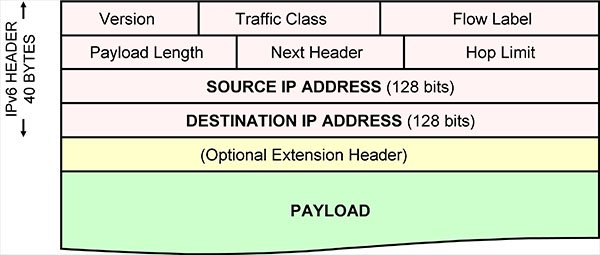IPv6 emerged from a pack of contenders to be the eventual replacement for IPv4 (the version we are currently using).
The main improvement is expansion of the address field from 32 bits to 128 bits, which means a possible 2128 or 340,282,366,920,938,463,463,374,607,431,768,211,456 IP addresses.
Instructor Richard Olsen, P.Eng., part of Teracom's team of highly-experienced professionals, with over 30 years' experience at Southwestern Bell, did some calculations to help us understand how many addresses this is.
- Volume of Earth's crust (assume crust to be 1 mile deep) in cubic miles: 200,973,748
- Volume of Earth's crust in cubic inches: 51,119,292,912,253,500,000,000
- Assume 10,000 grains of sand in a cubic inch.
- Grains of sand in Earth's crust: 511,192,929,122,535,000,000,000,000
- Number of IP addresses per grain of sand in Earth's crust: 665,663,289,798
666 trillion IP addresses per grain of sand in the Earth's crust, to a depth of one mile, all around the planet.
Every light switch, every plug, your fridge, your dog, your car, every Coke machine, every streetlight will be addressable and controllable.

The Flow label is the virtual circuit ID, which is an MPLS label number.
The traffic class is a prioritization tag, probably implementing Expedited Forwarding.
The next header field is a way of building variable-length headers, which can become as complicated or as simple as necessary. This field indicates what the next protocol header is following the IPv6 header, i.e. what control information is at the beginning of the payload being carried in the packet. A typical IPv6 packet would have TCP as the next header. Other possibilities are:
- Another IPv6 header
- Hop-by-hop option header
- Destination options header [intermediate nodes]
- Routing header
- Fragment(ation) header
- Authentication header o Encapsulating security payload header o Destination options header [final destination]
- Upper-layer header [TCP, UDP]
The hop limit field is like the time-to-live field in IPv4, and is decremented by each router until it reaches zero, at which point the packet is discarded. The payload is the data being carried in the packet: the application layer message encapsulated in upper-layer protocol headers.
IPv6 Notation
IPv6 addresses are 128 bits long. Exchanging such numbers between people clearly will not work very well, and so the Domain Name System will be the way that users exchange addresses.
When it is necessary to discuss the numeric IPv6 address, this will be expressed as 8 groups of 16 bits represented using hexadecimal. For compatibility with IPv4, the last 32 bits could be expressed using the "old-fashioned" IPv4 dotted-decimal notation.
continue to the next tutorial on IPv6 address classes:
Allocation of Blocks of IPv6 Addresses: IPv6 Address Classes









